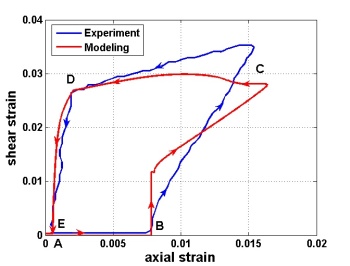In the last decade, the interest in the mechanical behavior of shape memory alloys (SMA) has rapidly grown with the increasing number of potential industrial applications. Several computational and experimental efforts have been made at different scales to gain further insight into the processes that characterize the SMA complex material response. Under general multi-axial loading histories, complex phenomena, such as variant reorientation and coalescence, need to be taken into account by material models. We have developed a macroscopic phenomenological model that is based on the classical framework of thermodynamics of irreversible processes and accounts for the effect of multiaxial stress states and non-proportional loading histories. Computational tests demonstrate the ability of the model to simulate the main aspects of the shape memory response in a one-dimensional setting. Some of the features that have been experimentally found in the case of multi-axial non-proportional loading histories can also be successfully reproduced. As an example, Figure 1 shows the simulated response for tension-compression uniaxial loading at different material temperatures. For the case of biaxial non-proportional loading, Figure 2 displays a good qualitative agreement between our simulations and experimental data available in literature. The model has been implemented into the finite element code ABAQUS and is currently being used for the analysis of porous SMA structures.


Relevant Publications
M. Panico, L.C. Brinson, A three-dimensional phenomenological model for martensite reorientation in shape memory alloys, to appear in Journal of the Mechanics and Physics of Solids, 2007.